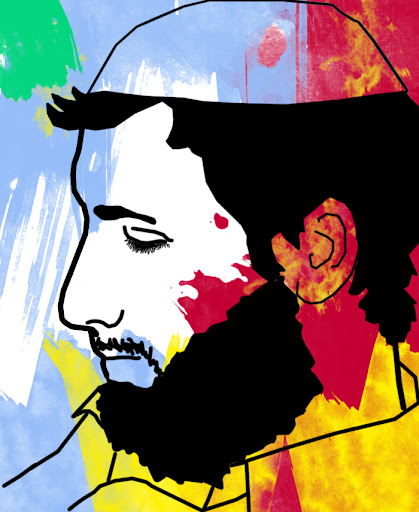
(Source)
I've spent the last few weeks working in the Model Matzo bakery, in an effort to give a meaningful Passover experience to the over 6,000 children that passed through our doors.
While the Jewish world at large has spent its time eliminating every last trace of chametz -every corner checked, cupboard cleaned, and pocket emptied . . . I have spent my time rolling in it.
Literally.
The model matzos that we make are in no way kosher for passover . . . Flour invaded every available surface -from my yarmulke to my sandals (of the Moses costume).
As they days went by, I began to think about my situation. True there is nothing long with using non-kosher for passover 'matzo' to teach children -so long as they eat it before the holiday itself (a real shmurah matzo was handed out before they left), but one can not but help but think of the irony: The very medium that we were using to teach the story and message of Passover was one forbidden on the day itself.
During Pesach, we are very careful to stay away from any trace of leaven -the physical manifestation of the impurity of Egypt . . . ego, haughtiness and inflated self-worth and the like. We therefore refrain from even getting our matzos wet, as the wet matzo's thickness and inflated form, despite being kosher, smacks at the image of chametz.
Interestingly, however, the last day of Passover we are careful to get our matzos wet . . . on Shevuos there is even a mitzvah to bring chametz in the temple -for after we have refined our inner character either partially, as in the last day of Passover, or entirely, as in Shevuos, then we are ready to work and interact with our egos, our pride . . . In being Jews.
Perhaps then this is the lesson behind my chametz'dike matzos. Our job is to give the children a sense of self-worth and pride in their Judaism. They should be matzos -they should be humble -but inside they need that extra kick . . .

Technorati Tags: Exodus, Matzo, Chametz, Passover, Thoughts, Dvar Torah, Photography, Life, Pride, Judaism, Chabad








8 comments:
Nu, how's Germany?
I;m not sure, as I haven't left yet . . .
BS"D
I like this post...
I never understood why it was encouraged, or even considered acceptable, to wet the matzot on the last day of Pesach, if it is considered a chashash of chametz the rest of the chag. And if you say that it's not the same strength as the rest of the chag..but you use the same dishes the next year, even though they're 'chametz'. I suppose I should just be grateful that we don't have 8 days...(or a 3-day chag). But...if you can explain the gebrochts thing, I would appreciate it.
is the second guy in the pic, piersin?
-In short: Not eating gebrochts is a relatively new custom -it started around the time of the Maggid, due to changes in how matzo was baked. Therefore, though we are makpid during the rest of pesach, on the last day of yom tov -a darabanin- the Alter Rebbe writes that for simchas hachag we can be meikal.
That's why we use the same keilim (if your pesachdike keilim on the first days touch gebrochts, you don't need to throw them out)
On this the Rebbe explains that b'pinimius (and the reason why the Rebbeim were mehadar to wet their matzos) is due to the fact that we've already gone through sefiras haomer of the first week, we've refined ourselves to a certain level, and can now deal with some level of pride (though not real chametz ch"v)
Mk -Yes it is.
I'm sure the kids will value the experiences you're giving them.
When I was little we were members of a Conservative shul, and they had a great "model seder" every year for the Hebrew School.
Post a Comment